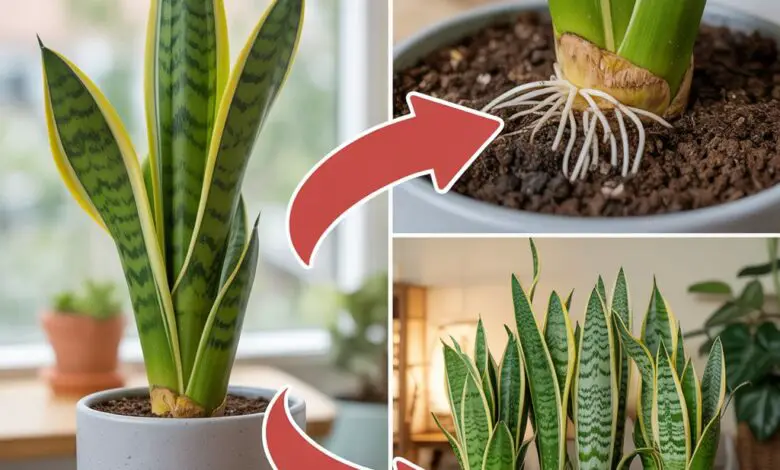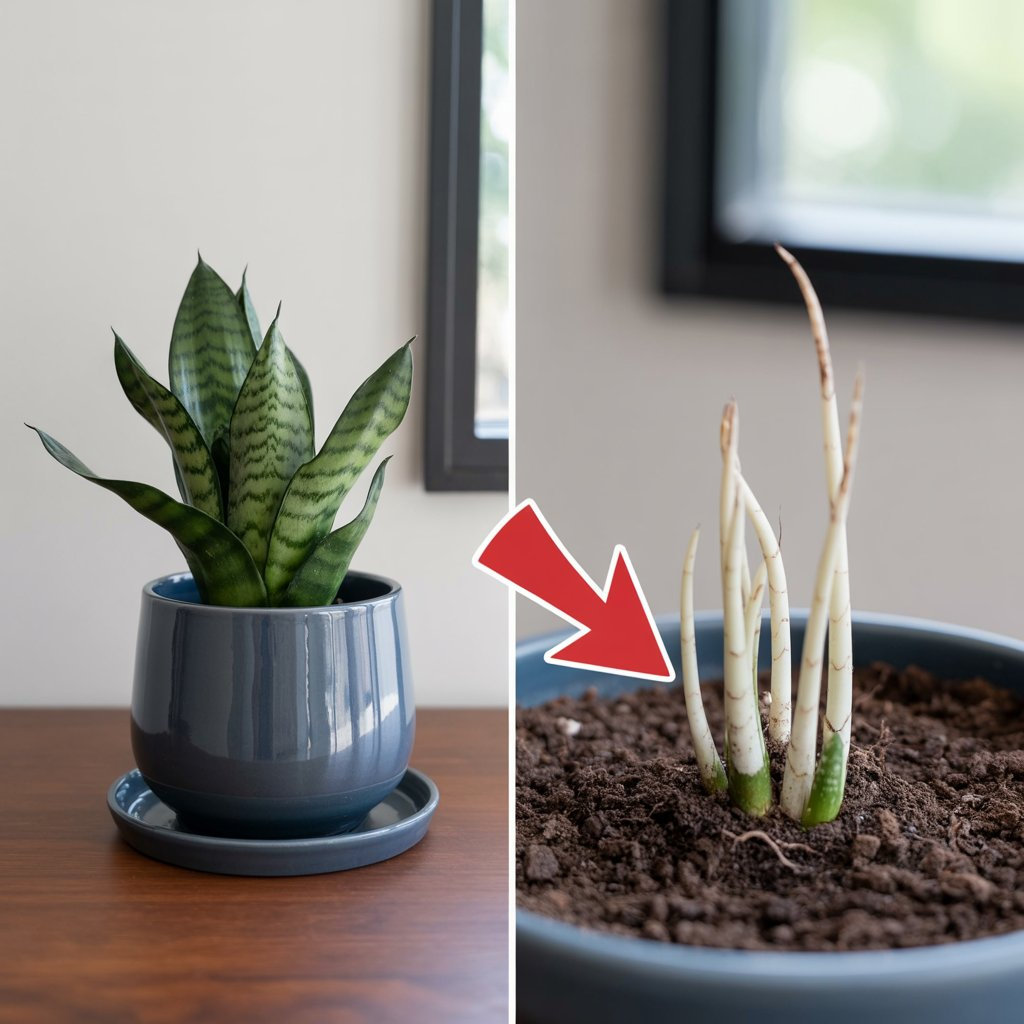How to Force a Snake Plant to Produce Pups so that you can multiply these plants in a jiffy!

Snake plants (Sansevieria) are beloved for their striking upright leaves, easy care, and natural air-purifying abilities. One of the best ways to grow your collection is by propagating pups—small baby plants that sprout from the main plant’s roots. But what if your snake plant isn’t producing pups? Don’t worry! With the right care and a bit of gentle encouragement, you can stimulate new growth and multiply your plants.
Here’s everything you need to know to help your snake plant produce pups and expand your green family.

Why Do Snake Plants Produce Pups?
Pups, also called offshoots, develop from rhizomes—horizontal underground stems that help the plant reproduce. However, factors like insufficient light, overwatering, or too much space in the pot can slow pup growth. By creating ideal growing conditions, you can encourage your snake plant to send out more pups.

8 Proven Ways to Encourage Pup Growth
1. Give It Bright, Indirect Light
Snake plants tolerate low light but thrive in bright, indirect sunlight. More light fuels photosynthesis, giving the plant the energy to grow pups.
- Place your plant near an east- or south-facing window with filtered light.
- If natural light is limited, supplement with a grow light.
- Avoid harsh direct sunlight to prevent leaf burn.
2. Use a Slightly Tight Pot
Snake plants like to feel a little root-bound, which signals them to spread through pups.
- Choose a pot just a bit bigger than the root ball.
- Avoid oversized pots, as too much space encourages root growth over pup production.
3. Let the Soil Dry Between Waterings
Overwatering can lead to root stress and stunt pup growth. Snake plants prefer dry conditions.
- Water only when the top 2–3 inches of soil are dry.
- Use pots with drainage holes to prevent water buildup.
- Cut back watering in cooler months to avoid root rot.
4. Fertilize During the Growing Season
Feeding your snake plant provides the nutrients it needs to grow and reproduce.
- Use a balanced liquid fertilizer diluted to half strength.
- Fertilize every 4–6 weeks during spring and summer.
- Avoid over-fertilizing, which can harm roots.
5. Apply Gentle Stress
A little stress encourages your snake plant to reproduce.
- Keep it slightly root-bound.
- Allow the soil to dry out more between waterings.
- Consider moving the plant to a cooler spot (55–65°F or 13–18°C) for a few weeks to mimic seasonal changes.
6. Divide the Plant
Dividing your snake plant stimulates rhizomes to produce new pups.
- Carefully remove the plant from its pot.
- Separate the rhizomes into smaller sections.
- Replant each section in well-draining soil and water lightly.
7. Trim Older Leaves
Removing older or damaged leaves redirects energy toward new growth, including pups.
- Use sterilized scissors to trim yellow or damaged leaves.
- Don’t remove too many leaves at once to avoid stressing the plant.
8. Choose the Right Soil Mix
Well-draining soil keeps roots healthy and encourages pup development.
- Mix cactus or succulent soil with perlite or coarse sand.
- Avoid heavy soils that retain moisture, as snake plants are prone to root rot.
How to Remove and Replant Snake Plant Pups
Once pups reach about 2–4 inches tall, they’re ready to be separated.
- Gently remove the entire plant from the pot.
- Use a clean knife to cut the rhizome connecting the pup to the mother plant.
- Plant the pup in a small pot filled with well-draining soil.
- Water lightly and place it in bright, indirect light.
Signs Your Snake Plant Is Ready to Produce Pups
- The plant is tall and healthy with strong leaves.
- Roots are filling the pot, indicating it’s becoming root-bound.
- New rhizomes are visible just below the soil surface.
With patience and the right care, your snake plant will reward you with plenty of pups—giving you fresh, thriving plants to enjoy or share. By balancing nurturing with gentle stress, you’ll help your snake plant grow its own green family.
Happy planting!





